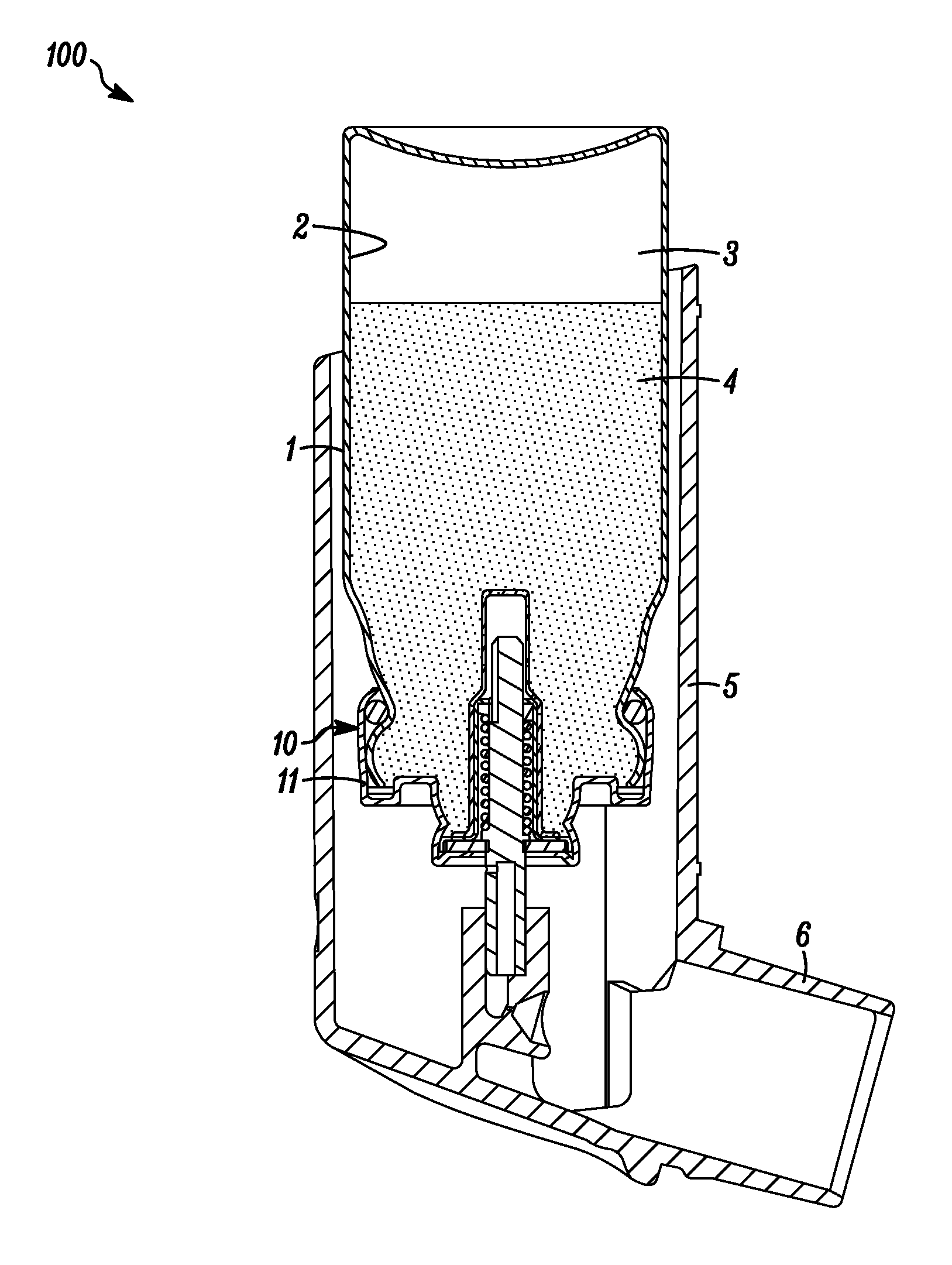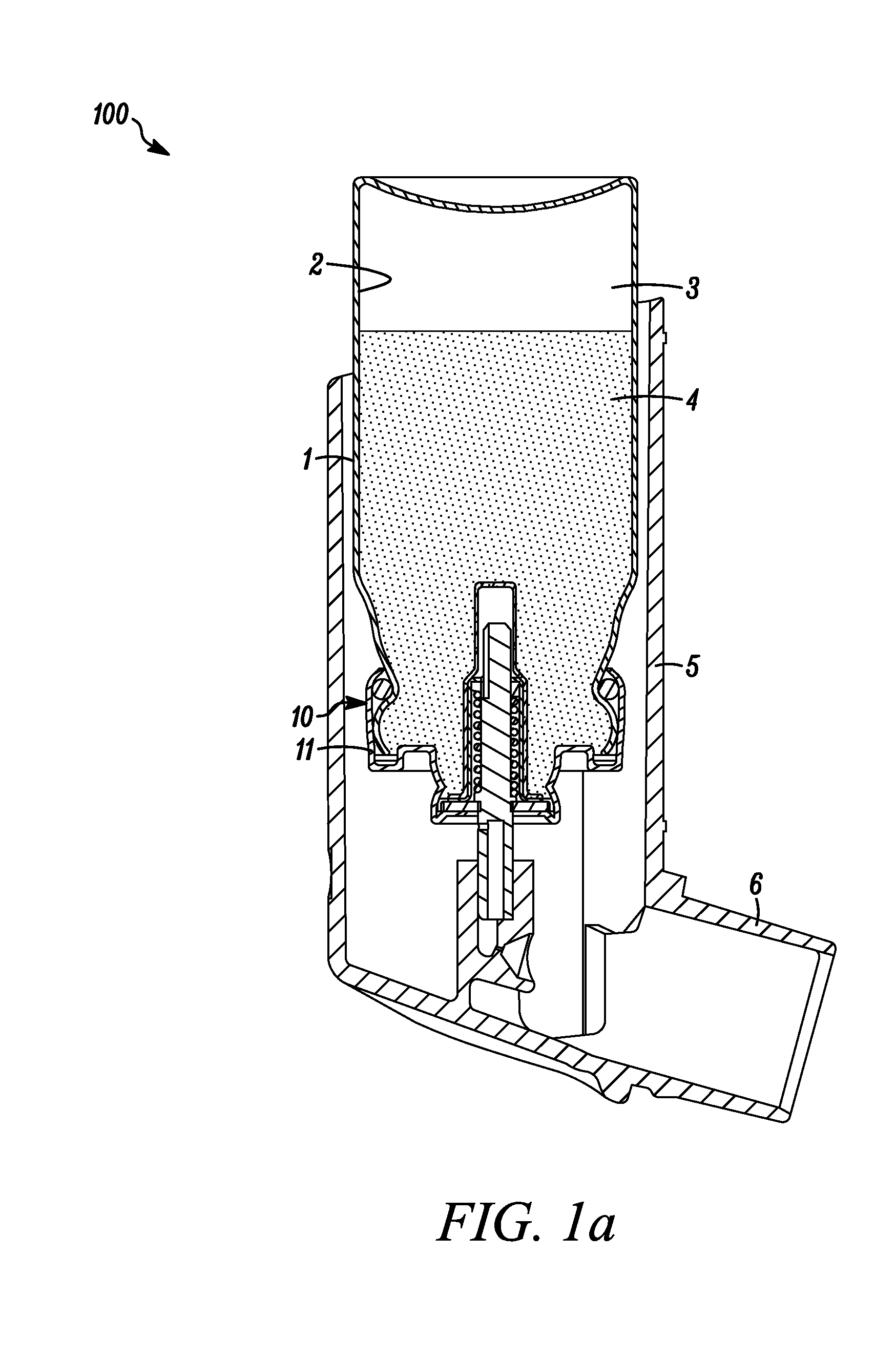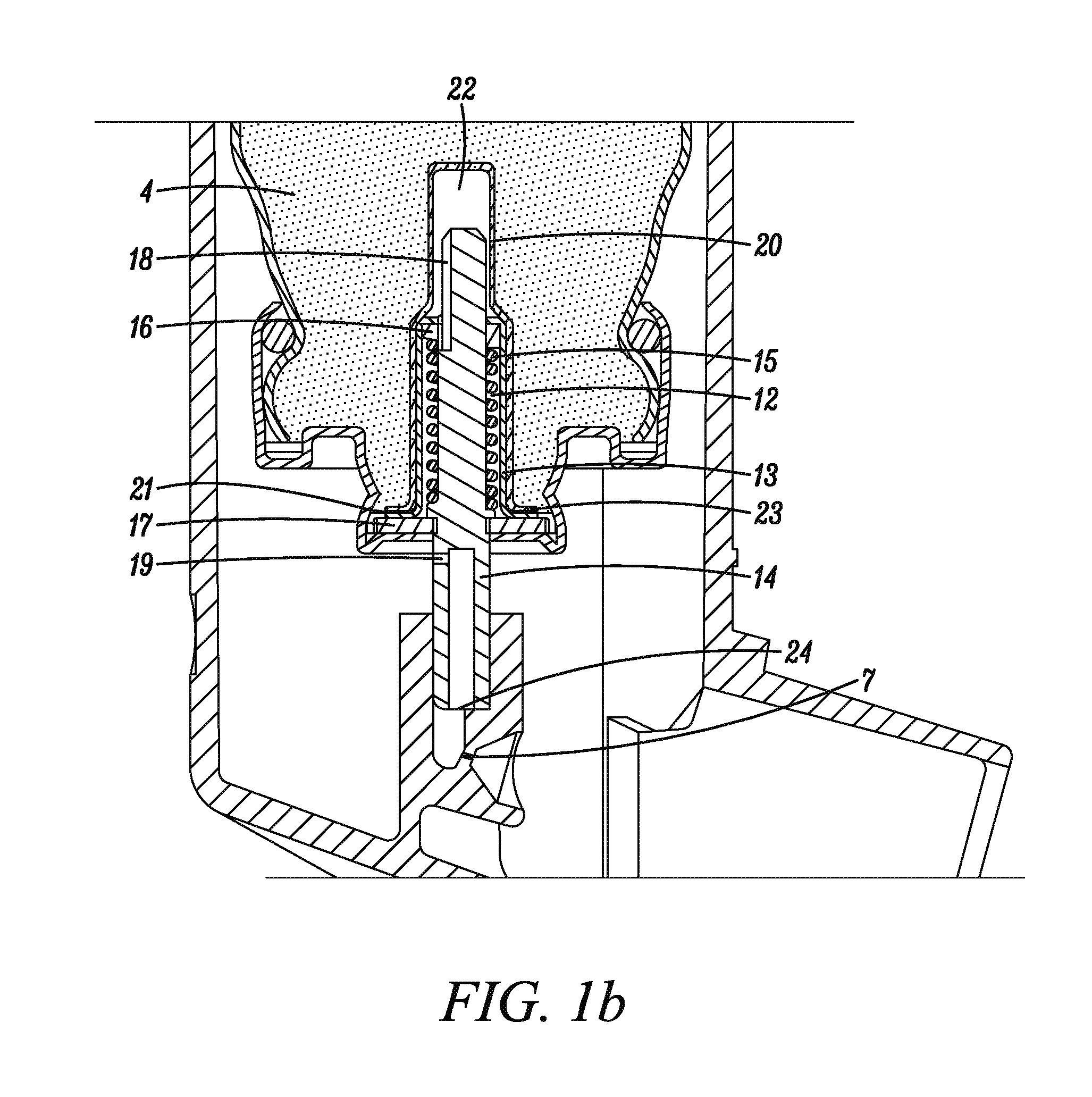Medicinal inhalation devices, valves and components thereof
a technology of inhalation device and valve body, which is applied in the direction of respirator, mechanical apparatus, other domestic articles, etc., can solve the problems of undesirable effects, unsuitable and/or desired materials for a particular component, and materials having relatively high surface energy, so as to simplify the design and formulation work, the effect of favorable valve performan
- Summary
- Abstract
- Description
- Claims
- Application Information
AI Technical Summary
Benefits of technology
Problems solved by technology
Method used
Image
Examples
experiment 1
[0061]10 g of Magnesium Stearate (NF ex FISCHER SCIENTIFIC Lot 432021, ˜10 micron, stearic acid ≧40%; total of stearic and palmitic acid >90%) was added to dehydrated ethanol (400 g) and high shear mixed using a Silverson mixer for 1 minute. The dispersion was added to a product vessel of an Avestin C50 homogenizer and processed at 20,000 p.s.i. using re-circulation for 30 minutes. Microscopic analysis of a sample taken from the resulting dispersion indicated that particulate material has a relatively uniform particle size of about 0.5 μm.
[0062]A plurality of valve cores (sub-assemblies consisting of stainless steel valve stem, a stainless steel valve spring, an outer diaphragm nitrile seal and an inner tank nitrile seal (see FIGS. 1a&b) were dipped in the prepared dispersion and then allowed to drain on a tray while letting the solvent evaporate.
[0063]Metered dose valves of the type shown in FIGS. 1a &b were assembled from the coated cores and the other necessary, non coated compon...
experiment 2
[0076]Elastomer outer diaphragm nitrile seals (total weight 57 grams) were placed in a 250 ml beaker, and dry particulate Magnesium Stearate ((vegetable grade) PARTEC™ LUB MST ex MERCK Lot K41295363043; mass median diameter of particles about 5 microns.) in an amount as indicated in the following Table was added.
TABLE 1Weight ofWhitenessWhitenessWhitenesspowderof sealof sealof sealNo.(mg)boreedgeface2a65 83 ± 12109 ± 15104 ± 192b97143 ± 14158 ± 20147 ± 172c130176 ± 11172 ± 21158 ± 242d152191 ± 8 184 ± 21171 ± 202e165184 ± 8 174 ± 23156 ± 24no—28 ± 530 ± 219 ± 3coating
[0077]The beaker was closed with a film sold under the trademark PARAFILM, and the beaker was shaken for 30 seconds Thereafter, the coated seals were removed from the beaker. Coated seals and uncoated seals were photographed. The appearance of the elastomeric outer seal components is exemplified in the photograph shown in FIG. 7, which shows, from left to right, uncoated, then coated with Magnesium Stearate at levels of...
PUM
| Property | Measurement | Unit |
|---|---|---|
| mean median diameter | aaaaa | aaaaa |
| mean median diameter | aaaaa | aaaaa |
| mean median diameter | aaaaa | aaaaa |
Abstract
Description
Claims
Application Information
 Login to View More
Login to View More - R&D
- Intellectual Property
- Life Sciences
- Materials
- Tech Scout
- Unparalleled Data Quality
- Higher Quality Content
- 60% Fewer Hallucinations
Browse by: Latest US Patents, China's latest patents, Technical Efficacy Thesaurus, Application Domain, Technology Topic, Popular Technical Reports.
© 2025 PatSnap. All rights reserved.Legal|Privacy policy|Modern Slavery Act Transparency Statement|Sitemap|About US| Contact US: help@patsnap.com



